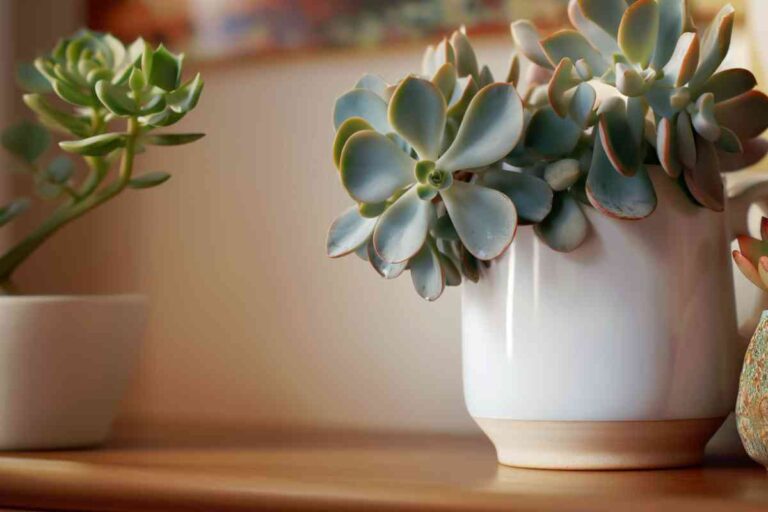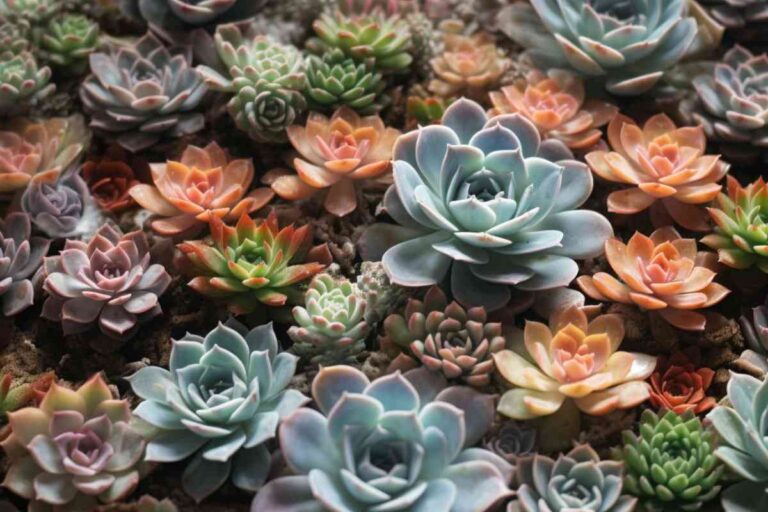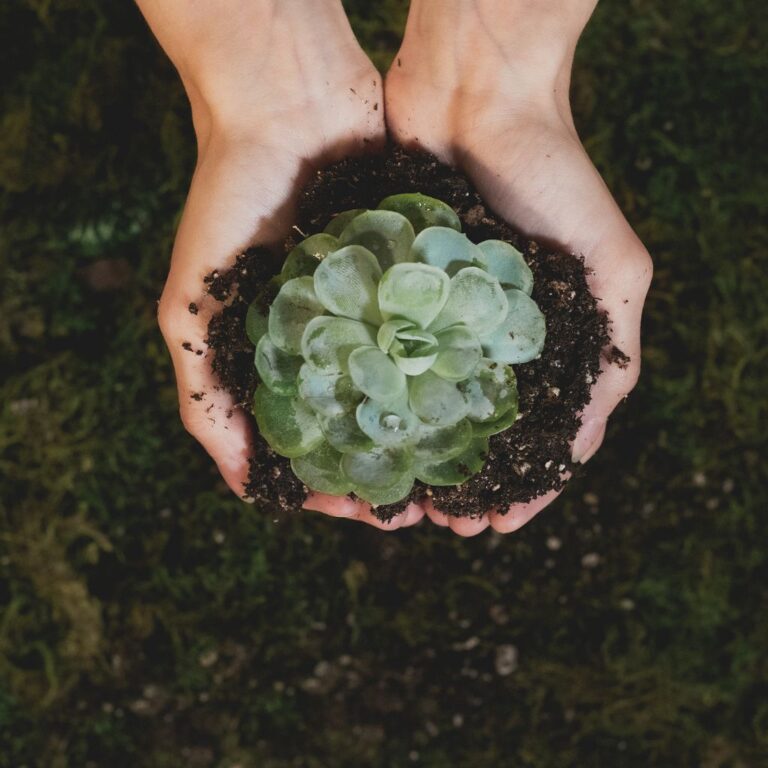Genista Lydia: A Comprehensive Guide to Growing and Caring for This Beautiful Plant
Overview of Genista Lydia
Genista Lydia, also known as Dwarf Broom, is a member of the Genus Genista, which is a group of flowering plants in the Fabaceae family. This family includes many other well-known plants such as peas, beans, and clovers.
The classical Latin name for Genista Lydia is Genista lydia Boiss. This plant is native to the Mediterranean region and can be found in countries such as Greece, Turkey, and Spain. It is a small shrub that typically grows up to 60 cm in height and has green leaves that are small and needle-like.
One of the most distinctive features of Genista Lydia is its bright yellow flowers, which bloom in the spring and summer months. These flowers are rich in flavonoid compounds, which have been shown to have antioxidant properties. According to a study published in Thieme-connect, the flowers of Genista Lydia contain several flavonoid compounds, including quercetin, kaempferol, and isorhamnetin.
In addition to flavonoids, the flowers of Genista Lydia also contain alkaloids. A study published in Thieme-connect showed that six alkaloids were found in the flowers of Genista Lydia, including lupanine and sparteine. These alkaloids have been shown to have a range of pharmacological properties, including antitumor and anti-inflammatory effects.
Overall, Genista Lydia is a fascinating plant with many unique properties. Its bright yellow flowers, flavonoid compounds, and alkaloids make it a valuable addition to the Mediterranean landscape.
Physical Characteristics
Genista lydia is a small, compact, and dwarf shrub that belongs to the Fabaceae family. It has a dense mound of soft green foliage that is highlighted by clusters of bright yellow flowers. In this section, we will explore the physical characteristics of Genista lydia, including its floral features, foliage attributes, stem and branch structure.
Floral Features
The flowers of Genista lydia are one of its most striking features. They are bright yellow in color and have a broom-like appearance. The flowers are borne on trailing branches that arch gracefully, giving the plant a delicate and elegant look. The flowers are small, with a diameter of about 1 cm, and are arranged in clusters at the tips of the branches. They bloom in late spring and early summer, attracting bees and other pollinators to the garden.
Foliage Attributes
The foliage of Genista lydia is also noteworthy. The leaves are slender and alternate, with a texture that is soft and delicate to the touch. The leaves are bright green in color and have a glossy sheen that adds to their visual appeal. The foliage is dense, forming a compact mound that is perfect for use as a border or ground cover.
Stem and Branch Structure
The stem and branch structure of Genista lydia is characterized by slender, green stems that are densely covered with foliage. The branches are trailing and arching, giving the plant a graceful, flowing appearance. The plant grows to a height of about 60 cm and has a spread of about 90 cm. The stems are thin and flexible, making it easy to train the plant to grow in a particular direction.
In summary, Genista lydia ‘Select’ is a small, compact, and dwarf shrub with bright yellow flowers, soft green foliage, and slender, arching stems. Its foliage is dense and forms a compact mound, making it perfect for use as a border or ground cover. The plant blooms in late spring and early summer, attracting bees and other pollinators to the garden.
Habitat and Native Regions
Genista lydia is a species of flowering plant that belongs to the Fabaceae family. It is native to the southeastern Balkans, western Asia, and the Mediterranean region. This shrub typically grows in submontane scrub habitats, on rocky slopes, and in open woodlands.
In Turkey, Genista lydia is found in the Aegean region, where it grows in Quercus-dominated vegetation units. The species is also found in Syria, where it grows in dry, rocky areas.
The natural range of Genista lydia has been declining due to habitat loss and fragmentation caused by human activities, including urbanization, agriculture, and logging. As a result, the species has been listed as “Near Threatened” on the IUCN Red List of Threatened Species.
Efforts are being made to conserve the remaining populations of Genista lydia. In Turkey, the species is protected under the “National Parks Law,” which prohibits the collection, destruction, and trade of wild plants. In addition, the Turkish government has established protected areas, such as the Bozdağ Nature Park, to conserve the natural habitats of the species.
Overall, the distribution of Genista lydia is limited to specific regions, and the species is facing threats from habitat loss and fragmentation. Conservation efforts are necessary to ensure the survival of this plant species in the wild.
Cultivation and Care
If you are planning to cultivate Genista Lydia, it is important to know how to care for it properly. In this section, we will discuss the sun and soil requirements, watering and feeding, and pruning and maintenance of this plant.
Sun and Soil Requirements
Genista Lydia requires full sun to thrive and grow. It can tolerate a range of soil types, but prefers well-drained soil with a pH between 5.5 and 7.5. This plant is also heat tolerant, making it a great choice for areas with hot summers.
Watering and Feeding
Genista Lydia is a tough and low-maintenance plant that requires very little watering once established. It is important to water it regularly during the first growing season to help it establish a strong root system. You can also feed it with a balanced fertilizer in the early spring to promote healthy growth.
Pruning and Maintenance
Genista Lydia is a small, deciduous shrub that blooms in late spring to early summer with bright yellow, floriferous flowers. It has a simple branching habit and is disease-free and deer-resistant. To keep it looking its best, you should prune it after flowering to promote multiple branching and a good habit. You can also prune it in the winter to remove any old wood.
Genista Lydia is a great plant for borders, rock gardens, banks, and slopes. It also does well in containers and can be used as a groundcover or for mass plantings. With its improved branching and low mounding habit, this plant is a showy addition to any landscape. It is also easy to propagate from semi-hardwood cuttings.
In summary, Genista Lydia is a tough and low-maintenance plant that is disease-free and deer-resistant. With proper care and cultivation, it can thrive in a variety of settings and add a bright pop of color to your garden.
Genista Lydia in Different Seasons
Genista Lydia is a flowering plant that exhibits different characteristics during different seasons. Here is a brief overview of how Genista Lydia appears in each season:
Spring
In spring, Genista Lydia blooms with vibrant yellow flowers that grow in clusters. The leaves of the plant are green and slender, and the stems are thin and woody. During this time, the plant is actively growing and producing new shoots.
Summer
During the summer months, Genista Lydia continues to produce new flowers, but the blooms may not be as vibrant as they were in the spring. The leaves of the plant may also become slightly more yellow in color. However, the plant is still actively growing and producing new shoots.
Fall
As fall approaches, the leaves of Genista Lydia may begin to turn yellow and fall off. However, the plant may still produce some flowers during this time. This is also a good time to prune the plant to encourage new growth in the spring.
Winter
In winter, Genista Lydia may appear dormant, with no new growth or flowers. However, the plant is still alive and should be cared for accordingly. It is important to protect the plant from freezing temperatures and excessive moisture during this time.
Overall, Genista Lydia is a hardy plant that can thrive in a variety of climates and conditions. By understanding how the plant changes throughout the year, you can better care for it and help it reach its full potential.
Uses in Landscaping and Design
Genista Lydia is a popular choice for landscaping and design due to its attractive features and versatility. This compact and dwarf shrub has trailing branches that form a dense mound, making it perfect for low mounding and groundcover. Its clusters of soft green stems and showy yellow flowers make it an ideal choice for borders, rock gardens, and mass planting.
One of the most notable features of Genista Lydia is its toughness, making it suitable for banks and slopes. Its ability to thrive in harsh conditions and its low maintenance requirements make it an excellent choice for landscape design. Additionally, this shrub can be trained to grow against walls, adding a unique touch to any garden or outdoor space.
In terms of design, Genista Lydia ‘Select’ is a popular choice due to its more compact and uniform growth habit. This variety is perfect for adding structure to a garden or landscape design. Its low-growing habit also makes it ideal for creating borders or defining spaces in a garden.
When using Genista Lydia in landscaping, it is important to keep in mind its low mounding and trailing growth habit. This shrub is best used as a groundcover or as a mass planting to create a dense carpet of green. It is also important to note that this shrub can become invasive if not properly maintained, so it is important to keep it pruned and under control.
Overall, Genista Lydia is a versatile and attractive shrub that can be used in a variety of landscape designs. Its tough and hardy nature makes it an excellent choice for banks and slopes, while its low-growing habit makes it perfect for groundcovers and borders. With its showy yellow flowers and soft green stems, Genista Lydia is sure to add a touch of beauty and elegance to any outdoor space.
Frequently Asked Questions
What is the common name for Genista Lydia?
Genista Lydia is commonly known as the “Lydia broom.” It is a deciduous shrub that produces yellow flowers in the spring and summer.
How do you take care of Genista Lydia?
Genista Lydia prefers well-drained soil and full sun exposure. It is drought-tolerant, but regular watering is recommended during the first few years after planting. Fertilize in the spring with a balanced fertilizer. Pruning should be done after flowering to maintain its shape and promote new growth.
How big do Genista Lydia get?
Genista Lydia can grow up to 5 feet tall and wide. It has a compact, rounded shape and is often used in rock gardens, borders, and containers.
Is Genista Lydia an invasive species?
Genista Lydia is not considered an invasive species. However, some species of Genista have become invasive in certain areas, so it is important to check with your local extension office before planting.
What are some similar plants to Genista Lydia?
Some similar plants to Genista Lydia include Cytisus scoparius (Scotch broom), Spartium junceum (Spanish broom), and Lupinus (lupine).
What are some pruning tips for Genista shrubs?
When pruning Genista shrubs, it is important to wait until after flowering to avoid removing buds for next year’s blooms. Use sharp pruning shears to cut back the previous year’s growth to shape the plant and promote new growth. Remove any dead or damaged branches as well.
Genista Lydia is commonly known as the \”Lydia broom.\” It is a deciduous shrub that produces yellow flowers in the spring and summer.
“}},{“@type”:”Question”,”name”:”How do you take care of Genista Lydia?”,”acceptedAnswer”:{“@type”:”Answer”,”text”:”
Genista Lydia prefers well-drained soil and full sun exposure. It is drought-tolerant, but regular watering is recommended during the first few years after planting. Fertilize in the spring with a balanced fertilizer. Pruning should be done after flowering to maintain its shape and promote new growth.
“}},{“@type”:”Question”,”name”:”How big do Genista Lydia get?”,”acceptedAnswer”:{“@type”:”Answer”,”text”:”
Genista Lydia can grow up to 5 feet tall and wide. It has a compact, rounded shape and is often used in rock gardens, borders, and containers.
“}},{“@type”:”Question”,”name”:”Is Genista Lydia an invasive species?”,”acceptedAnswer”:{“@type”:”Answer”,”text”:”
Genista Lydia is not considered an invasive species. However, some species of Genista have become invasive in certain areas, so it is important to check with your local extension office before planting.
“}},{“@type”:”Question”,”name”:”What are some similar plants to Genista Lydia?”,”acceptedAnswer”:{“@type”:”Answer”,”text”:”
Some similar plants to Genista Lydia include Cytisus scoparius (Scotch broom), Spartium junceum (Spanish broom), and Lupinus (lupine).
“}},{“@type”:”Question”,”name”:”What are some pruning tips for Genista shrubs?”,”acceptedAnswer”:{“@type”:”Answer”,”text”:”
When pruning Genista shrubs, it is important to wait until after flowering to avoid removing buds for next year’s blooms. Use sharp pruning shears to cut back the previous year’s growth to shape the plant and promote new growth. Remove any dead or damaged branches as well.
“}}]}




